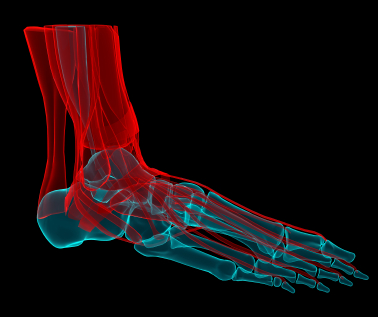If you watch basketball, or perhaps like to tune in to ESPN during your afternoon workouts, you’ve not doubt heard about Kobe Bryant’s Achilles injury. While it might not be big news in your household, sports enthusiasts all across Arizona are weighing in on Bryant’s future in basketball, his teams’ future without him, and what it’s going to take to heel a torn Achilles tendon. It’s a good thing that we have Dr. Shelden Martin, Arizona Rattlers Team Doctor, to clear some things up for us!
According to Dr. Martin, Achilles tendon ruptures are commonly seen in older athletes, most notably over 30 years of age and weekend warriors. Kobe Bryant is definitely not a weekend warrior, although he does cross the age threshold at 34 years old.
Eccentric Contraction
In clinical terms, the mechanism of Bryant’s injury is an eccentric contraction, where the ankle and knee are bent so the gastrocnemius and Achilles tendon are maximally stretched and then forced to lengthen resulting in the rupture of the tendon. If you happened to catch the Lakers vs Warriors game back on April 5th you might have seen Bryant crumble to the floor after making a move to the basket. It was in this moment that you can see the Achilles tendon stretched in the seconds before he hit the ground.
Achilles Tendon Rupture Treatment
Initially after the injury, Kobe Bryant received nearly immediate surgery to repair the torn tendon. According to Dr. Martin, who has seen this injury many times treating Arizona weekend warriors, treatment options for such Achilles damage can range from non-operative to surgical repair to reconstruction using patients own donor tendon grafts to cadaveric grafts to biological graft substitutes to “bridge the gap” and reinforce the repair when the injury is chronic and long standing. As you can see, there are a variety of options for Achilles tendon rupture, many of them non-operative in the cases of our weekend warriors.
Surgical repair is usually recommended for the more active individuals, especially high-level athletes such as Kobe Bryant, says Dr. Martin.
And, in Bryant’s case, depending on the location of the tear, surgery would have involved an orthopedic surgeon sewing the two ends of the tendon together with high tensile permanent sutures or reinserting into the calcaneious bone tendinous insertion site using various techniques, usually suture anchors or sewing the tendons through bone tunnels.
For the most innovative techniques, Dr. Martin says that biologic stimulants have more recently been used to augment repairs and aid in healing in hopes of stimulating faster and more complete healing with the hope of promoting a faster, more complete and reliable return to the sport, especially for high-demand athletes like Bryant.
Recovery
Dr. Martin goes on to say that in instances like Kobe Bryant’s injury, recover time no matter what the procedure or treatment method typically requires six to nine months and involves extensive physical therapy.
However, with that said it is not impossible for Bryant to return sooner than that, although it is highly unlikely. Whether or not he returns before six to nine months, he will return. Many high-profile professional athletes like Bryant who have ad similar injuries have returned, Dr. Martin points out.
For example, Elton Brand, Dominique Wilkins and Chauncy Billups are just a few professional athletes who ruptured their Achilles tendon and returned successfully the sport they love.






